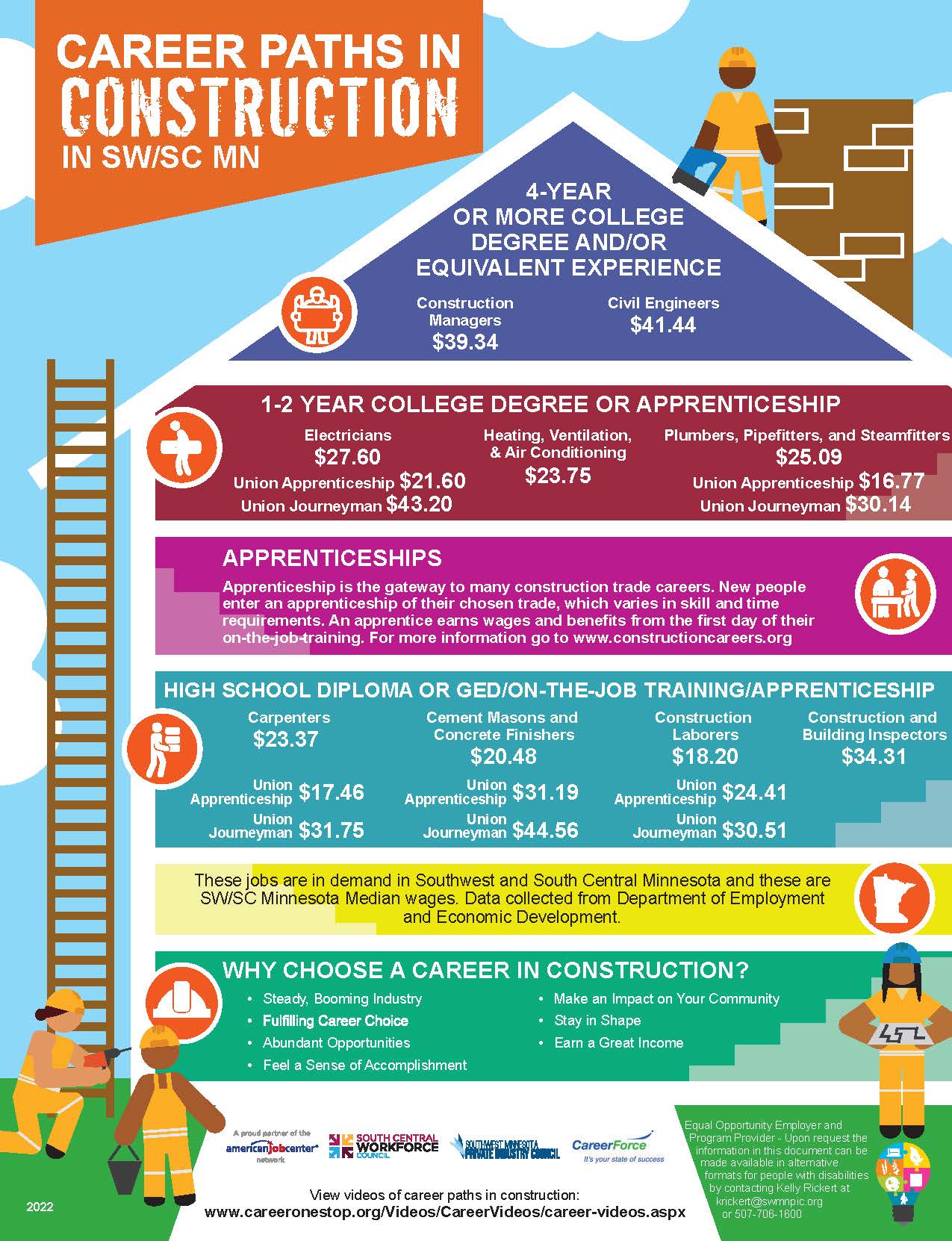Construction regional labor market information profile
Despite above-average wages, only about 20 percent of construction vacancies required post-secondary education compared with 36 percent across all industries. Fifty percent of construction vacancies required experience of at least a year, and 25 percent required a license or certificate. Education requirements in construction tend to be low because the industry follows a different model for training workers, not because the jobs are low skilled.
Employers and unions routinely provide training in the form of entry level jobs that provide informal training as well as more formal on-the- job training arrangements such as apprenticeships. Formal apprenticeships are available in a range of construction occupations, including electrical, plumbing, carpentry, cement masonry, drywall installation, painting, roofing and other occupations.
Construction-related certificates and associate degrees are available through technical schools and community colleges in a number of different programs, including carpentry, electrical and power transmission installation, building/construction, finishing, management and inspection, and plumbing and related water supply services.


